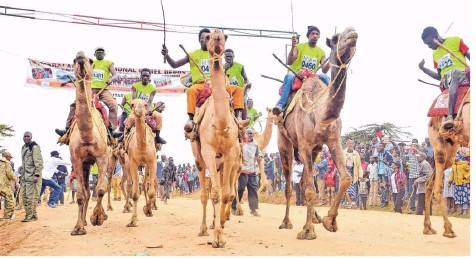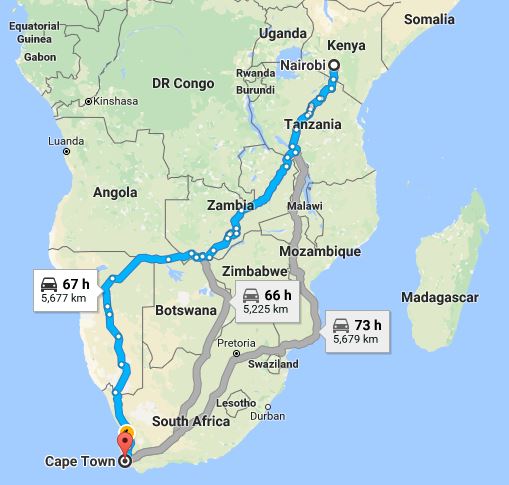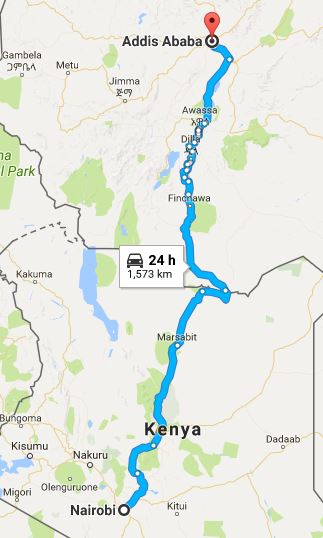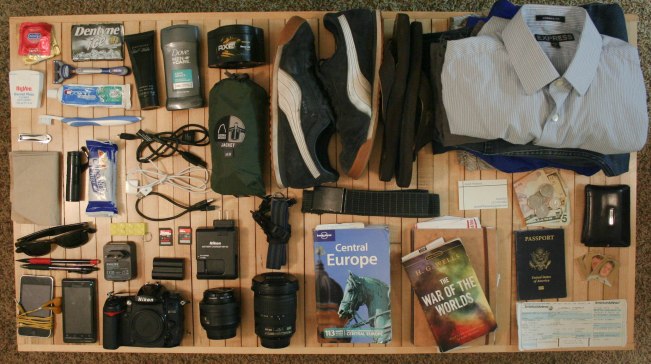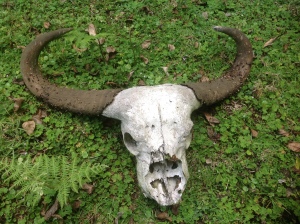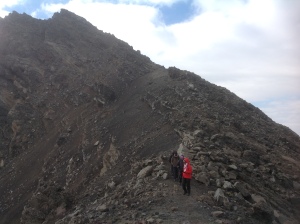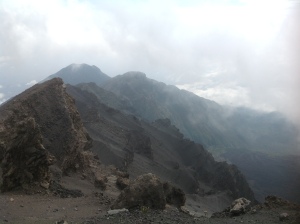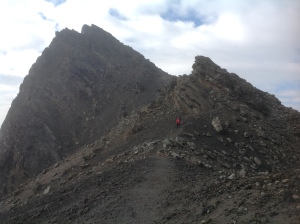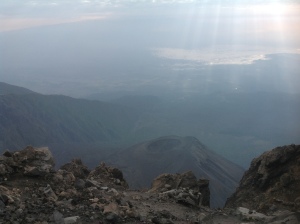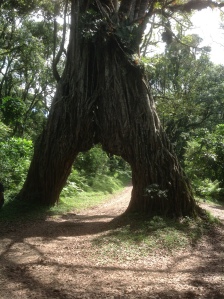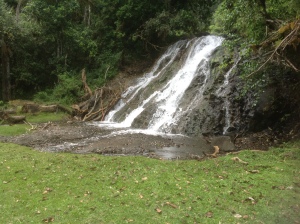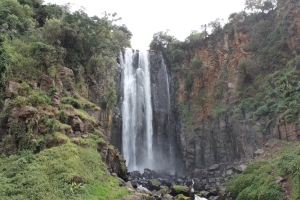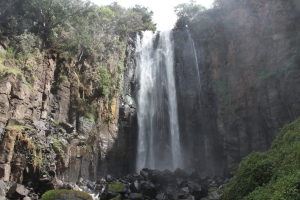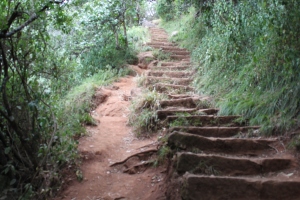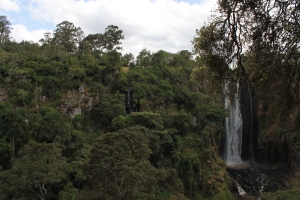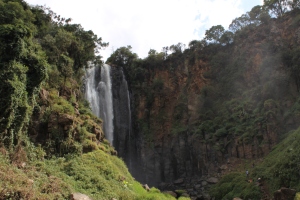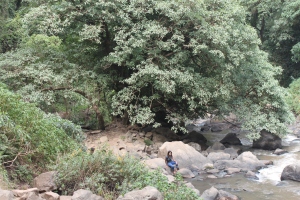
In January of this year (the year of our Lord 2013 – sounds too English) I left my job. I resigned and left the building. Doesn’t that read ninja from every end? Maybe. For two years prior, I had thought, imagined and finally decided it was worth it. Mine was a cool job if that means working from the deep end, freedom, a love affair with the industry and flying around. Leaving was an epiphany, reinforced by many things. One of them was the need to go where I wanted when I wanted; freedom. And so on the Monday that followed the last Friday at work, I was on a bus for 13 hour, 920km long road trip from Nairobi to Dar es Salaam, Tanzania.
The bus is named Sai Baba and I caught it from River Road, 0530hrs Monday morning, with a backpack, rubber shoes, and a pair of shorts. It felt so light in mind and body. There was not a return by date, there was neither going to be a work phone call nor a report to submit after this and I was not travelling to see a client. I could just alight in Arusha, Moshi or anywhere and sleep there. I could even get into any Tanzanian village, make a home and live happily ever after. Do you get what I mean? I was my own man in the truest form you can imagine. Answerable to no man; indescribably liberating.
The Sai Baba guys were decent enough to call me around 4:45am, but I was awake. With so many missed trips from travellers, they knew it; sleep doesn’t wake people up. I followed my receipt to a seat near the window, pulled the curtain and perched my backpack. Fellow long distance travellers joined, escorted by families or alone; bye bye wishes, it was good to see you handshakes, safe journey hugs. Nairobi wakes up really early. Everybody leaving from Nairobi was in, save for one lady. She will come by the second bus. The empty seats will be filled at the border into Tanzania. That next to me was one of them and my bag became such a packed arm rest. I kicked off my shoes, pulled Sidney Poitier’s The Measure of a Man: A Spiritual Autobiography and we left the city, right on time.
We will pass by my former workplace. I will look out and being a Monday, realize that’s where I would have spent the day. At such a time, you ask yourself; what have you done? This is a Monday and you’re in shorts, away to Tanzania on a bus, instead of dressing up for work. Really?
Cruising on the newly done Namanga road is such a pressure. Kenya and its many newly done roads. Very smooth. The music in the bus was Zillizopendwa or Golden East African oldies. We heard, not listened to, these songs a lot on Saturdays as momma washed our school uniforms outside the house. It was not allowed in our house to listen to irreligious songs. Then, Kenya had one major radio station; the state broadcaster. I knew the words but not the meaning of most of them. The last time I was on this road was 2010. We were going to climb the highest mountain in Africa, Kilimanjaro. 9 friends. We did it save for one. I liked it that I was unaccompanied anyway because I wanted to soak in, shed off the working skin and just be away like a tramp.
My wish at the boarder was that the bag seat would not be taken, so as to read Sidney Poitier comfortably. After Kenyan border control, I paid a fine of about 4 usd to Tanzania border control for not having my Yellow Fever Vaccination Certificate. I bought apple juice and korosho for good gnawing along the way. None of the new passengers took the backpack seat. It was going to be another 3 hours of fine riding. Sai Baba pulled up its anchors and left.
The road from the Kenya/Tanzania border town of Namanga to Arusha, one of the main Tanzanian towns, is very well done with clear markings, road signs and deep drainage troughs. It also has little traffic; any cruiser’s dream. On both sides are large expanses of idle land with shrubs and red soil. You will see the Maasai, their livestock, their manyattas and a few small shopping centers. The air smells fresh and when the clouds are clear, the caps Mt Kilimanjaro and Mt Meru will show themselves. It is beautiful; the textbook road to ride in a convertible.
We got to Arusha. Arusha is quite eventful and almost all shops have a glass door. A hanging board or some thingamabob that lights up will either say closed or open. In Nairobi shops are normally wide open, even for jewelry. Sai Baba was in a rush. We dropped some and picked others. I gave up my seat to a well-built light lady, dressed in a leso with black and yellow flowers. We only spoke a little. I asked her the names of a few shopping centres as we left Arusha for Moshi. I continued with Sidney Poitier with the passengers’ noise and a Lingala song called Kasongo forming the background music. Kasongo Mobali na Ngai. Once again, I knew the words but not the meaning.
Sai Baba was fast, which made it hard to take good shots of Mt Kilimanjaro, whose ice caps were now clear. Soon we’ll be in Moshi town to drop and pick. We left again for the most beautiful Tanzania country side. This is the Usambara mountains on the left as you head east. The road is nearly straight and once again, with little traffic. Road construction was going on and for a good part it was a dusty ride. I put Sidney Poitier down to love the view. There are few shops along the road at Himo, Segera, Chalinze and Mlandizi areas as well as travellers’s restaurants at Mombo and Korogwe areas. Where you find them, traders leave luscious fruits by the roadside and get busy with other duties. Only when you stop do they come to sell. Most of the houses are done of red bricks and you can spot kilns all along the way. Sai Baba crew passed over drinks.
It was a long ride and Sai Baba was really fast now. It felt great. I had always wanted to do this. Stop working and take time out. It felt like a coup d’état. I had taken the jump, done the unusual and there was no going back now. What I can tell you is that I felt free, sane and very light in the head. I was ready to go and go, wipe off that sweat and feel better. There was a heartbeat too. What a young eagle feels once released by its mother to spread it wings. No safety net.
We soon got to Korogwe which was the journey’s halfway point. The lunch, water, pee and poop point. The centre is built specially for bus stop overs. The loos are chic and restaurants have great selection of samosas, sausages, vegetables, burgers, meat and blaring music too. I got a chicken burger, fruits and sat down on the footsteps leading to the restaurant. From here I could see the country well, munch and drink. No one knows you here. You’re alone in a nonchalant breeze, shoeless, having chicken in a foreign Kiswahili speaking land. Isn’t that a certain something?
We had 30 minutes and Sai Baba roared again. In 2 hours palm trees started appearing. We were now headed to the shores of the Indian Ocean before turning right for to descend upon Dar es Salaam. I packed Sidney Poitier and took a nap. I woke up to an argument between the driver and the police. He was driving fast but loudly insisted he wasn’t. He shouted at the police. I found that brave. In Kenya, traffic police rule. If they say you’re wrong, you don’t dispute because indeed you are. This is the second time he was in a row with cops.
Night was now approaching. More palm trees appeared, traffic increased and Dar kept coming closer. I saw the road to the historical town of Bagamoyo and recognized it. I had toured Bagamoyo 4 years ago. Shortly after, at 2030hrs, Sai Baba safely brought us. Long distance bus trips are big business in Tanzania because it is a vast country. There is a major and exclusive bus station called Ubung’o that handles more traffic than any in Nairobi. They can’t allow you in or out without a ticket. Well organized.
Before alighting, I was already examining the buildings for a place to lodge. Once out, I knew better than to look a stranger. In shorts and just a backpack, I was everything Dar. I took a road in search of any signs of a guest house. After a few meters, street lights kept getting scarcer and the road seemed to lead to residential areas, so I turned. I went back to the bus station and took a road that I thought lead to the city centre. Traffic and street lights will tell you. I knew a popular entertainment area called Sinza and it wasn’t far from there. I asked a cab guy if I was on the right path and he said yes. Go down, turn right at that lighted junction over there. That’s the road to Sinza. I just walked.
I turned right. With several shops and clubs, it was going to be easy to find a guest house. Dar unlike Nairobi is pretty safe and sleeping joints abound. I was not worried at all but getting to 2100hr, you can never be sure and tired I was too. There was a flashy glass door with lights around and the guard said it was a hotel. The reception told me I could get a single room at 20usd. Man, wasn’t I glad. I hadn’t walked around much and this was a proper cheap hotel. I paid, went upstairs to the room.
The bed was well spread in white sheets. The window was wall to wall with white curtains. I pulled them and watched the outside. What a pleasure! The small TV was however not working. Tanzania had just started digital migration in the capital city and my hotel was slow to buy the set top boxes. I was going to miss the purely Kiswahili TV stations which I relished whenever I had visited Dar before.
Soon I will be fast asleep, with my back pack empty and stuff strewn all over. I first went out and bought roasted bananas, fish and soda which I took away to eat in the room. I slept and heavily so. So much that I didn’t notice someone getting into my room and pulling out my 3000ksh (35usd) which was on the table. I hadn’t locked the door properly. Well, every other memorable trip gets a stamp of unfortunate events and that was mine.
In the morning I would have tea, oranges, eggs and bacon at the hotel’s downstairs restaurant and set out to see more of Dar. Daladala is the name of the public transport buses for city service. Really old mini buses filled and filled from bus stop to bus stop. Commuters are always getting in and it seems, none getting out. There was always a lady offering to hold my backpack while I held on to the roof rail. I found that very polite. I rode on, enjoying the street Kiswahili, Bongo style. The heat in the coastal city was abnormal. You sweat even where you normally wouldn’t, but for the few days I spent in Dar, it was a pleasure. I would stay late into the night in an open air restaurant outside the hotel, eat, make friends and watch football.
On the day I took the bus again for the journey back to Nairobi, I had finished Sidney Poitier and bought SAS, a book on Australian Special Forces, to read on the trip back. There hadn’t been work calls and I was not on any assignment. I was just a man in khaki shorts, grateful and living the freedom in Dar es Salaam.
I boarded Sai Baba again at 0530hrs but not before asking how much the fare is from Dar to Lusaka, Zambia. A longer road trip to Cape Town, long overdue, is next on the cards, God willing.
